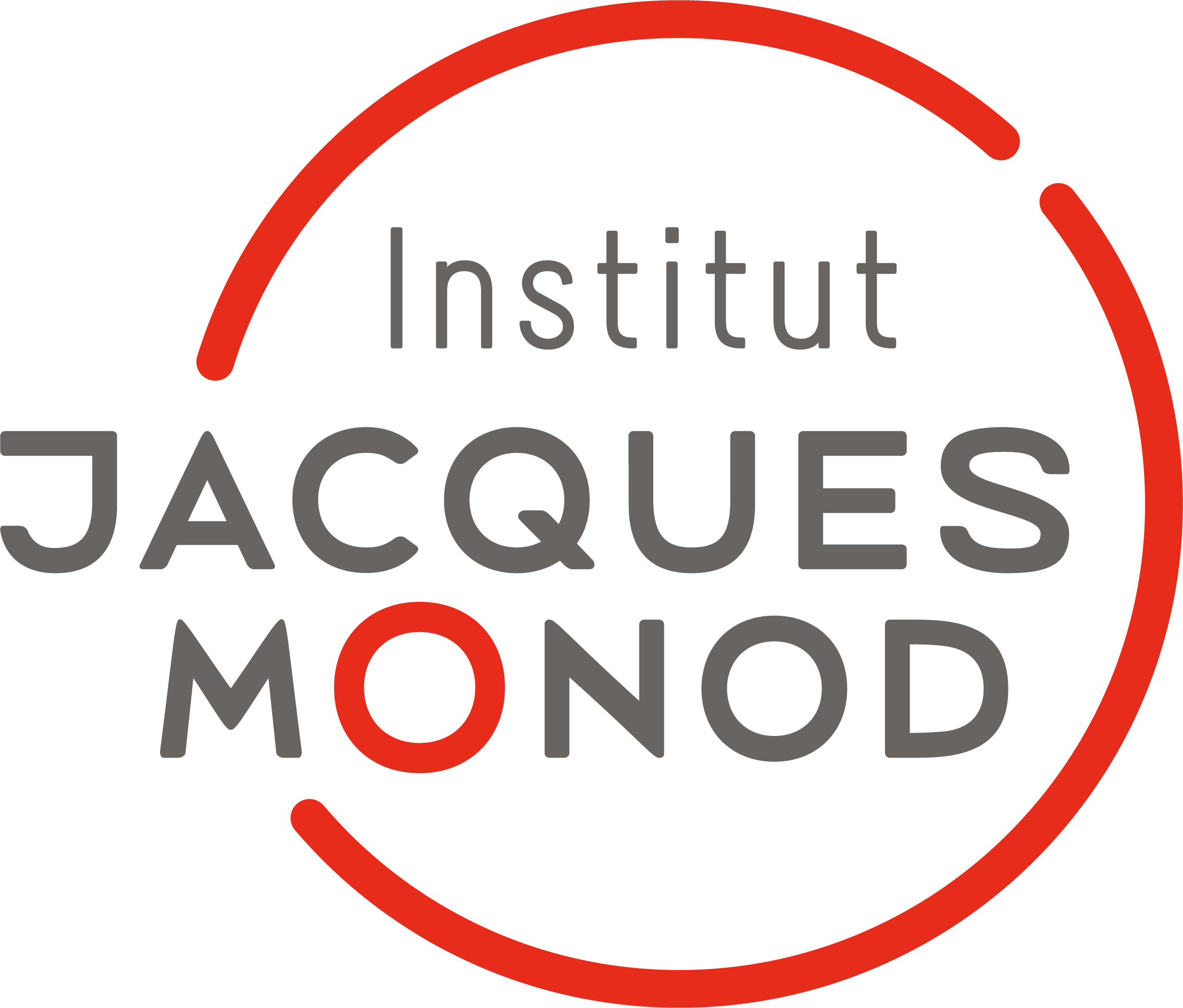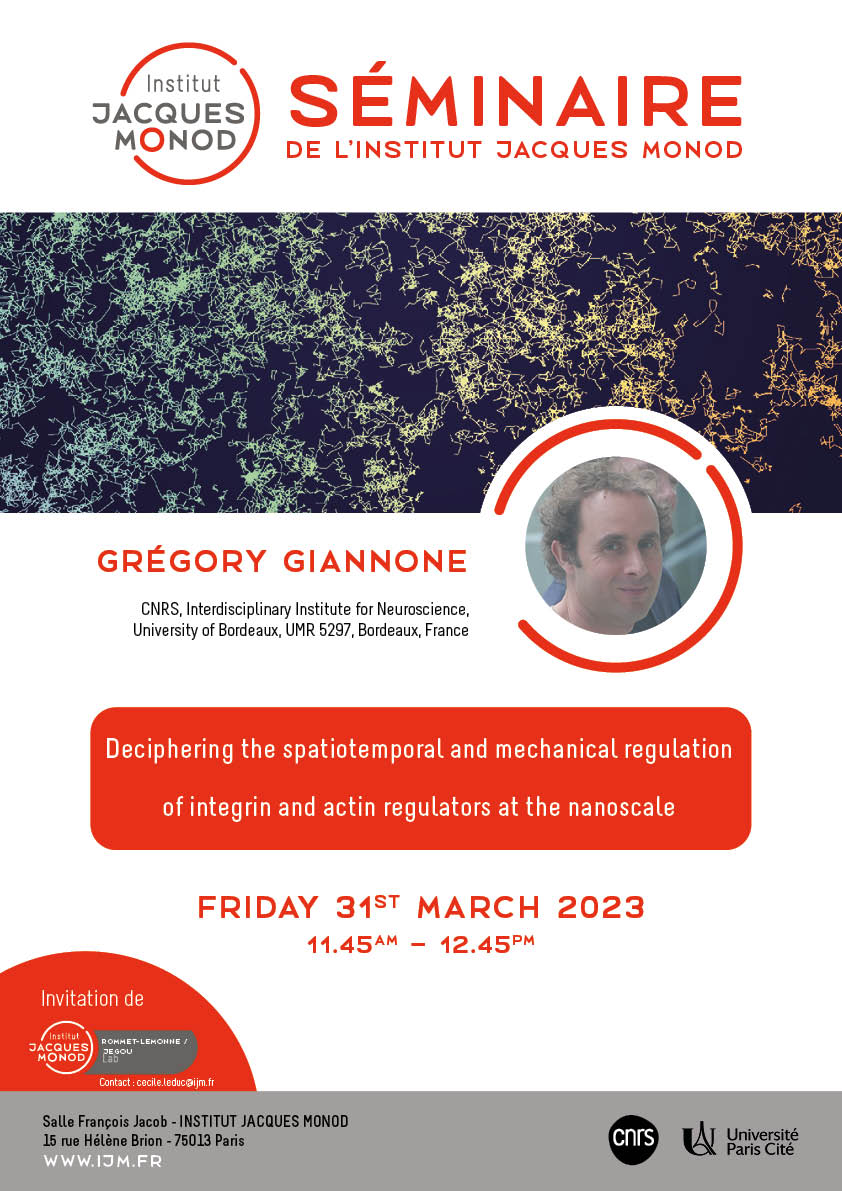Invité par l’équipe Romet-Lemonne/Jégou, Grégory Giannone donnera un séminaire sur le thème :
“Deciphering the spatiotemporal and mechanical regulation of integrin and actin regulators at the nanoscale”
Giannone Lab:
Cells have the ability to adjust their adhesive and cytoskeletal organizations according to changes in the biochemical and physical nature of their surroundings. In return, by adhering and generating forces on neighboring cells and extracellular matrices cells control their environment, shape and movement. This is true from integrin-based adhesive structures of migrating cells to synapses of neurons. Those adhesive structures are the converging zones integrating biochemical and biomechanical signals arising from the extracellular space and the actin cytoskeleton. Thus, the life-cycle of adhesive and cytoskeletal structures are involved in critical cellular functions such as migration, proliferation and differentiation, and regulate cell behavior in many physiological responses such as development. Alterations of adhesive and cytoskeletal organizations contribute to pathologies including cancer, but also cognitive disorders.
At the molecular, sub-cellular, and cellular levels, cell shaping and motility proceed through cycles lasting from seconds to minutes. During those cycles, critical proteins undergo stochastic motions and transient interactions that are essential to their functions. Regulation of these interactions by forces is at the base of mechano-transduction events controlling cell behavior. Therefore, to understand the molecular mechanisms controlling the life cycle of motile structures, it is crucial to study the position and dynamics of proteins but also their interactions and how mechanical forces control these molecular events.
Our goal is to decipher at the molecular level the spatiotemporal and mechanical mechanisms which control the architecture and dynamics of motile structures including integrin-based AS, the lamellipodium and dendritic spines. Exploration of these new dimensions requires an innovative and multidisciplinary approach combining cell biology, biophysics, biomechanics and advanced optical microscopy techniques including super-resolution microscopy, single protein tracking and quantitative image analysis.
We are developing three specific axes: 1/ Integrin adhesion 2/ Actin in dendritic spines 3/ Super-resolution developments


